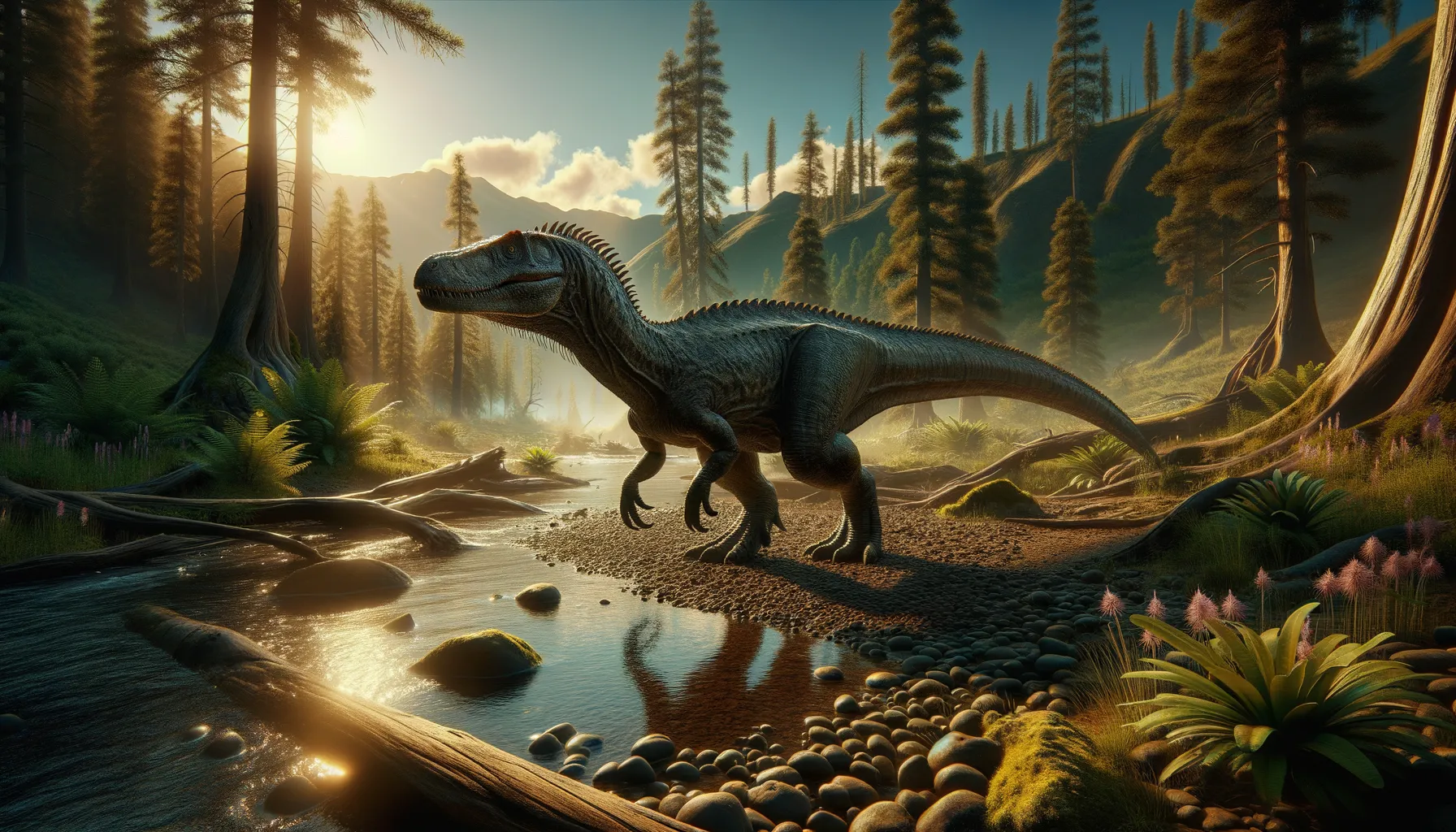
Spinosuchus
Discover the mysteries of ancient evolution!
Period
Triassic
Length
Measured up to 3 meters in length.
Height
Stood about 1.5 meters tall.
Weight
Estimated around 300 kg.
Spinosuchus is an ancient reptile that roamed the earth during the Late Triassic period. Known for its elongated tail and crocodile-like appearance, it offers insights into early dinosaur evolution. Though not much is explicitly known due to limited fossil records, Spinosuchus continues to intrigue paleontologists. Its anatomical structure suggests a transition between earlier reptiles to more advanced forms, highlighting its significance in the evolutionary tree.
Diet
Spinosuchus was likely carnivorous, feeding on small animals and possibly fish. Its diet would have consisted of whatever prey it could catch within its environment.
Hunting
This predator likely hunted using stealth and quick lunges. The waters of its habitat may have played a significant role in its hunting strategies, similar to that of modern-day crocodiles.
Environmental challenges
During the Triassic, Spinosuchus faced a changing world with shifting climates and evolving predators. Competition for food sources would have been significant, driving evolutionary adaptations. It would have needed to navigate both land and water challenges to survive.
Speed
Likely moderate, suited for terrestrial pursuit.
Lifespan
Estimated to be several decades.
First discovery
Identified in Texas, early 20th century.
Fun Facts
- Spinosuchus lived during the Late Triassic period, making it one of the older types of dinosaurs.
- This dinosaur's name, Spinosuchus, means 'spine crocodile', but it's actually more closely related to dinosaurs than to crocodiles.
- Fossils of Spinosuchus have primarily been found in what is now the southwestern United States.
- Spinosuchus was part of a group called archosaurs, which also includes the ancestors of modern birds and crocodiles.
- Unlike many of its dinosaur relatives, Spinosuchus might have walked on four legs instead of two, giving it a unique stance.
- Spinosuchus wasn't very large; it was a relatively small dinosaur compared to others from the Triassic period.
- Despite its name suggesting similarities with spiny dinosaurs, it's more well-known for its distinct vertebral features.
Growth and Development
Spinosuchus likely grew slowly to its maximum size over several years. Juveniles would have been vulnerable to predation and environmental factors. Understanding its growth patterns offers insight into the evolutionary history of reptiles.
Habitat
Spinosuchus inhabited river valleys and floodplain regions. These areas provided a rich environment with ample food sources. Its habitat would have had both terrestrial and aquatic elements, influencing its behavior and lifestyle.
Interaction with other species
Spinosuchus would have shared its environment with early proto-mammals and other reptiles. Interactions could range from predator-prey dynamics to competition for resources. Fossil evidence can only suggest possible interactions based on overlapping habitats.
Natural lifespan
It likely lived several decades, reaching maturity in its first few years.
Reproduction
Spinosuchus likely laid eggs in nests on land. Parental care, if any, remains unknown and is speculated based on relatives. The number of offspring would vary, dependent on environmental conditions.
Social behaviour
Little is definitively known, but solitary behavior is a possibility. It could have interacted with others of its kind through physical or auditory signals. Group behaviors, if any, have not been clearly established.
Fossil locations
Fossils have primarily been located in Texas, USA. These finds are limited, contributing to the mystery surrounding its full range. They offer a glimpse into the diversity of prehistoric ecosystems in North America.
